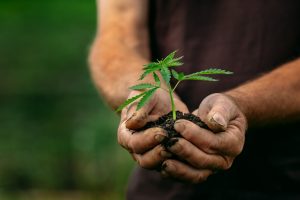We’ve crossed over into a brand new year – one teeming with opportunities to learn, grow, and cultivate new relationships (personal and professional)! And in the spirit of new relationships, here is part two of our thoughts on bringing the different aspects of the cannabis industry together!
In the previous part of this blog series we asked a question: Where are the points of intersection for the many different facets of the cannabis industry, and how could those facets come together for a conference that would benefit all?
To answer that question we believe that we need to ask those very same audiences, starting with medical professionals.
We asked them:
- What are the hurdles you foresee for bringing groups with different interests together?
- Who do you see as being the silenced voices? The audiences that do not get addressed at these varied conferences and events that need to hear what’s being shared?
As we interviewed these professionals, in this case, doctors, there was a consistent answer that repeatedly came up – that there is an interest and the education is needed, and that those silenced voices were patients and medical professionals that deal with both the stigma surrounding the use of this medicine and the inability to consistently both access, and present, the type of educational resources available at these conferences and events.
For example, one doctor mentioned one topic that would be a prime opportunity for multiple audiences to interact would be “how other medications interact with prescribed medical cannabis use.”
Not only does this potential topic involve patients and medical professionals, but it could impact:
- Cultivators and Processors: who might be apt to include medication interaction information when providing product to dispensary and business owners
- Dispensary Owners, Management and Staff: who would be able to provide information regarding this to patients and ensure that the medical professionals on staff make having that discussion with patients a priority
- Technology Developers: who could potentially develop a method to access medicine interaction data that would be provided to cultivators, and linked to specific data points like levels of THC
- Advocacy & Education Groups: who could begin speaking to their members about these interactions, and armed with this knowledge understand how to be better proponents for the use of medical cannabis with specific medical conditions.
And among all of these different groups (which also include lifestyle and culture brands and academic researchers) are patients who have an opportunity to interact with people who work at varied points of this medications’ lifecycle – from initial growth to consumption.
As we said in the last blog post:
Lay people are a crucial component of the cannabis community. Lay people can be patients looking to find a way to alleviate difficult and debilitating symptoms of a painful medical ailment. And those people need to be part of the discussion, and be provided an avenue to see the industry as a whole and interact with every aspect of it (if they choose).
Another example the doctors we spoke to gave was providing information directly to patients and caretakers concerning the efficacy of specific cannabis intake methods. Many patients may not have access to the educational resources available online or in print, and would benefit from a TED style presentation that distills this type of data into an easily digestible format.
Having different audiences come together helps to provide a pool of educational resources that empowers more people to be advocates, in any capacity, for the use of medical cannabis and its multitude of positive therapeutic benefits.
As noted by the doctors we talked to, those who work as medical professionals outside the cannabis industry are not immune to the negative stigma that surrounds it, and although there are avenues available to become better educated, those same professionals are susceptible to believing the myths that negatively impact public perception.
However, as the community grows and the relationships between the dissimilar parts of the industry pull together, the stigma of coming to events could also decrease – which empowers more people within the community, and outside of it, to participate and see how amazing this plant truly is.
For the next part of this series we’ll speak to patients and dispensary owners to find out what they would look for in a conference or event like ‘CannaTED’, and what would provide them with the best possible experience.






